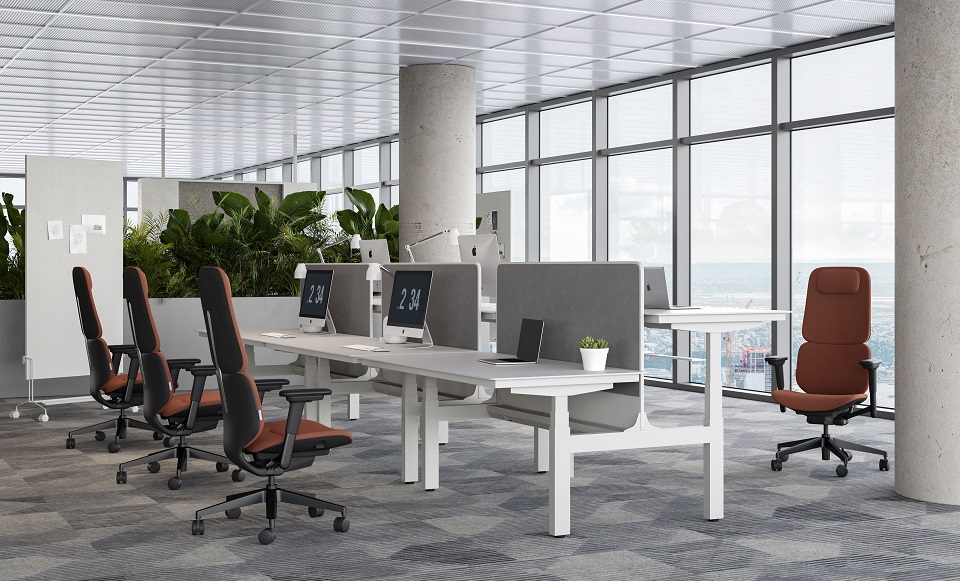
As more and more people are working from home, it's important to prioritize your health and comfort while working at your desk. One of the most important aspects of a home office setup is ensuring that it is ergonomic. Ergonomics is the study of how people interact with their work environments, and it is concerned with designing workspaces that maximize productivity while minimizing physical strain and injury. In this blog, we'll discuss some essential home office ergonomic tips to help you create a comfortable and healthy workspace.

The first and most important item on your ergonomic checklist should be your office chair. You'll be spending a significant amount of time in your chair, so it's essential to invest in one that provides proper support and comfort. Look for a chair that has adjustable features, including height, armrests, and lumbar support. A good office ergonomic chair should allow you to sit with your feet flat on the ground, your knees at a 90-degree angle, and your back comfortably against the backrest.

Once you have a good office chair, the next step is to set up your desk at the correct height. Your desk should be at a height that allows your elbows to rest at a 90-degree angle when typing. If your desk is too high or too low, it can lead to strain on your shoulders, neck, and arms. You can adjust the height of your desk by using risers or a standing desk converter. If you have a traditional desk, you may need to use an adjustable keyboard tray to achieve the correct height.
Your computer monitor should be positioned at a comfortable viewing height and distance. The top of your monitor should be at or slightly below eye level, and the screen should be an arm's length away from your face. This positioning will help reduce strain on your neck and eyes. If you use a laptop, consider using an external keyboard and mouse and a laptop stand to raise the screen to the correct height.
Good lighting is crucial for your health and productivity. Poor lighting can cause eye strain, headaches, and neck pain. To reduce eye strain and glare, position your desk and monitor so that windows and overhead lights are not directly in front or behind you. You can also use a desk lamp to provide additional lighting if necessary.
Sitting in one position for an extended period can cause discomfort and strain on your body. To reduce the risk of injury, take regular breaks to stand up, stretch, and move around. Aim to take a break every 30 minutes to an hour, even if it's just to stand up and stretch your legs.
Regular stretching and exercise can help reduce the risk of injury and improve your overall health. Consider incorporating exercises and stretches into your daily routine to keep your body limber and healthy. Simple exercises like shoulder shrugs, wrist stretches, and neck rotations can help reduce muscle tension and improve blood flow.
If your feet don't rest comfortably on the ground when sitting in your chair, consider using a footrest. A footrest can help reduce pressure on your legs and improve circulation. Ideally, your feet should rest flat on the footrest, with your knees at a 90-degree angle.
A cluttered workspace can cause unnecessary stress and distraction. Keep your desk and workspace organized and tidy to reduce stress and improve your focus. Use a filing system or storage containers to keep papers and supplies organized, and keep your desk free of unnecessary items.
Staying hydrated is essential for your health and well-being. Keep a water bottle on your desk so that you can drink whenever you want to drink.
By implementing these tips and making small adjustments to your home office setup, you can reduce the risk of developing musculoskeletal disorders and improve your overall well-being while working from home.

Jun. 21, 2023

Jun. 20, 2023

Jun. 16, 2023

Jun. 15, 2023

Daniel Yao
Yose Lang